|

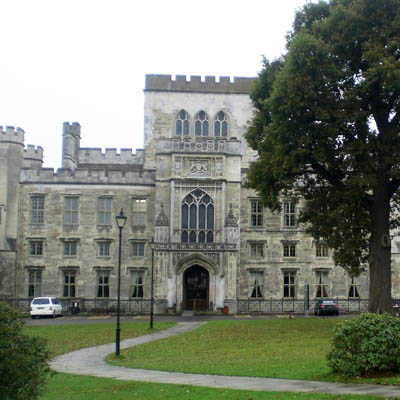 Ashridge
Ashridge
Berkhamsted
Hertfordshire
United Kingdom
HP4 1NS
Telephone: +44 (0)1442 843491
In medieval times Ashridge was the location of Ashridge Priory, a college of the monastic order of Bonhommes. During the Dissolution of the Monasteries the priory was surrendered to Henry VIII who eventually bequeathed the property to his daughter, Elizabeth. The priory church was demolished during the reign of Elizabeth I.
Sequencing pictures above:
1. Ashridge House.
2. Tomb ceiling with Puddingstone centrepiece and decayed iron frame showing.
3. The replacement ceiling frame in situ at the end of the passage.
4. Mick Thompson, overseer of the restoration showing the interior flint work and renovations in progress.
5. The Duke commemoration stone in the floor of the Tomb.
6. Natural local Puddingstone used extensively for the exterior.
7. The decorative well in the gardens near the far end of the tunnel, now ruinous.
8. The winding passage from the rock garden to the vicinity of the well head.
In 1604 the estate became the property of the Sir Thomas Egerton. Egerton's son, John Egerton, was created 1st Earl of Bridgewater on 27 May 1617. The estate was subsequently redeveloped as the Bridgewater residence. In 1800 Francis Egerton, 3rd Duke of Bridgewater cleared any remnants of the Priory, and the present house was constructed 1808-1814.
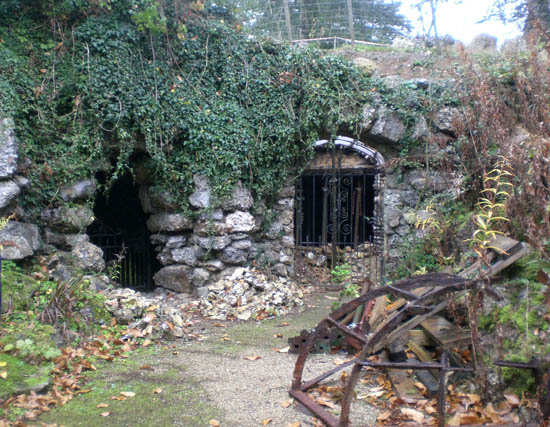
The grotto entrance (right) from the rock garden; the Tomb is to the left. In the foreground is the old chamber ceiling frame recently removed and replaced at this end of the grotto tunnel.
In 1848 the estate passed to the Earls Brownlow, another branch of the Egerton family and then in 1921 it was split, with the land passing to the National Trust, while the house and garden was acquired for commercial use. The house was eventually turned into a "College of Citizenship", a political training and education centre. During World War II, the building and grounds were temporarily requisitioned by the Charing Cross Hospital. Ashridge is now a management training college.
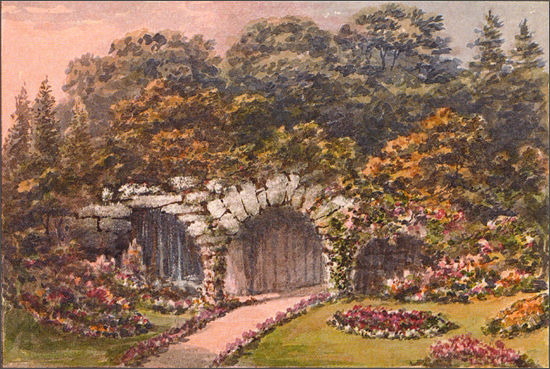
Repton's drawing of the pool and rock garden area with the grotto entrance and a cascade in an arched recess later to be the Tomb.
The grotto dates from the 1820s when Humphry Repton designed a flint lined passage of about 60 feet linking two distinct parts of the garden landscape. A map and picture of this design are reproduced here as they appeared in his Red Book. The three entrances included a cascade which subsequently was used to water a pond in the vicinity of the rock garden at the entrance to the grotto. The grotto was extended in the vicinity to include a further chamber known as the Tomb. A plaque dated 1857 in the floor records that it was to commemorate Duke, the master's horse. The rockery around the entrance used local Puddingstone, a natural conglomerate of beach pebbles and mortar. The passage and chambers at this end of the passage were constructed of local flints with the chamber ceilings supported by concealed iron frames. The Tomb chamber and the chamber at the entrance to the tunnel once had an interlinking arched doorway inside but this has subsequently been blocked with a flint wall.
Near the far end of the tunnel a well was constructed in the gardens to add decoration but this is now ruinous.
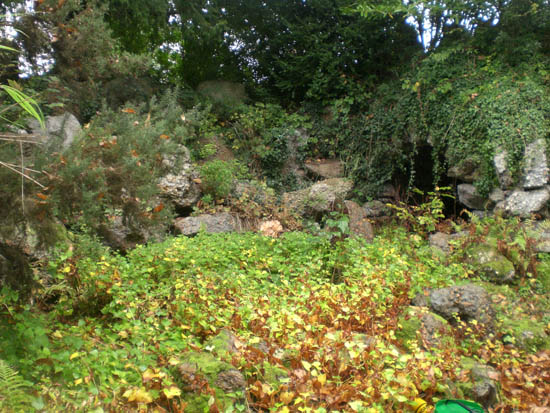
The pool and rock garden area with the Tomb entrance.
The grotto is a Grade II listed building but unfortunately in the early 21st century showed signs of collapse. The cause was in part due to the decay of the ironwork supporting the domed roof of the chamber at the end of the tunnel. This triggered a long and slow process of restoring the grotto masterminded by the tenacious Mick Thompson, who is overseeing the project and the gardens. At the time of our visit the chamber at the tunnel end had had its roof deconstructed and a new stainless steel frame inserted to replace the earlier corroded iron frame. Extensive negotiations with the various authorities regarding future restoration had slowed the process but it is now hoped to reinstate the flint roof before seriously bad weather sets in over the winter of 2014/5.
Email: contact@ashridge.org.uk (click here to send an email)
Website: Click Here
ADDITIONAL INFORMATION


GREAT BRITISH GROTTO GRADING
Click to go to Grotto.Directory home page
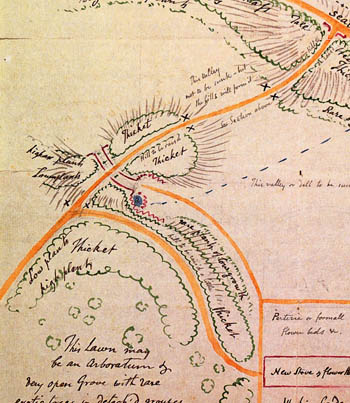
The grotto tunnel, rock garden and pool plan as set out by Repton in the early 19th century.
CONSTRAINTS
Not open to the public, On private property
FACILITIES
Grotto with extensive rock gardens
LANDSCAPE
Country town/village
REGION
England - Central
THE FEATURES PRESENT
+Dark and mysterious chambers and cave like spaces, +External rock structures, either real or simulated, +Internal stonework that is natural, recycled or simulated to give a subterranean decor, +Stunning setting and location, +Viewing points from within to an intriguing landscape outside, GRADED FIVE
|











 Ashridge
Ashridge